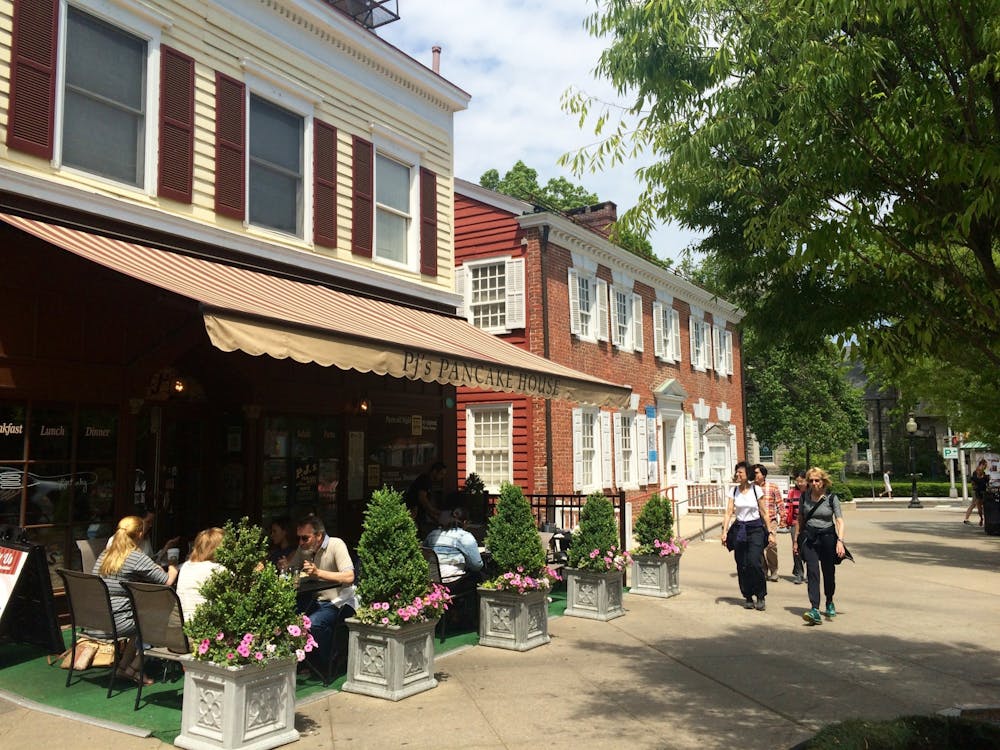After a meal at the residential colleges, everybody deals with a three-step process: food disposal, nonfood disposal and the conveyer belt. Into the food disposal unit, Princetonians dump biodegradable waste such as milk, banana peels and pancakes. But this excess food raises two questions. Why is there so much food to begin with? And what happens to it when it goes into the waste bucket?
After the chefs create new recipes and determine the menus for the year, according to Dining Services Director Stu Orefice, they use a program called FoodPro to figure out the quantity they should produce. Though the chefs generally only use the statistics from the past 2-3 years in their predictions, the program maintains statistics on residential college dining dating back to the mid-'80s. Based on these records of past consumption, gathered from prox swipes combined with an analysis of the protein content of a given dish, the software creates a prediction for future consumption of each item. Then, after the amount of food is decided by the chef, FoodPro creates an ingredients list for all the recipes.
"It's always difficult the first week of classes," Orefice said, because that's when the program's results undergo real-world testing. This year is no different. The opening of Whitman College and the introduction of the upperclassman meal-exchange program is not something FoodPro can analyze using data from past years. For example, when Whitman's Community Hall was closed for its dedication barbecue on Sept. 28, University chefs had to guess where students in search of food would go.
There are other kinks in the system, too. Many yearly events draw students away from the dining halls. One of the largest is Oxfam's Hunger Banquet, which this year coincides with Ramadan; the event is designed, according to former head of Oxfam Timothy Cheston '08, to have students "eat as the world eats." The Oxfam Hunger Banquet usually empties out the dining halls. Some years, the number of students eating at the residential colleges dropped as low as 1,000. On those days the amount of food produced is lowered accordingly.
The predictions are never perfect, though, and some food invariably gets thrown away. Those food/nonfood garbage bins really do get used: The edibles are picked up by Neil McIntyre who owns a nearby farm. There it gets served again — this time to McIntyre's pigs.
As for the food that never gets onto students' plates in the first place, it is either thrown away or donated. A student volunteer group, the Princeton Trenton Area Soup Kitchen (TASK) force, meets twice a week to collect food from the residential colleges. The members bring it to its eponymous soup kitchen, where it is redistributed to patrons in the area. The group has had problems, however, with the kind of food they pick up from the dining halls. Fruit and other healthy food is hard to come by. "What we pick up are cakes in bags or trays," said Kelly Wagner '08, co-head of Princeton TASK.
Currently, Princeton TASK has only 15 members, though they are looking for more. "I wish more people knew about TASK," said Jacqueline Thomas '09, co-head of the group. An expanded force could mean daily pickups and more members to collect at the eating clubs, which the group plans to do this fall.
Exactly how much food there is to be donated is debatable. According to Wagner, however, Princeton TASK members are often told there is no extra food and turned away empty-handed. "But you kind of want to look in their fridge and see," she said. "I feel like we are a very wasteful university." Orefice disagrees. "Generally speaking," he said, "we have more than the soup kitchen would like to have."







